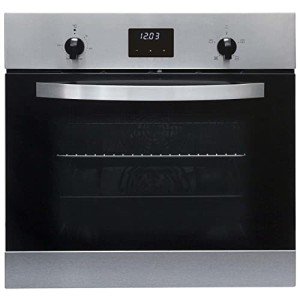Understanding Ovens and Hobs: A Comprehensive Guide
Cooking has actually come a long way given that the days of open flames and basic cooking techniques. Today, ovens and hobs are at the heart of modern-day kitchens, supplying flexibility, effectiveness, and an array of cooking alternatives. Whether you are an amateur cook or an experienced chef, comprehending the differences, functions, and functions of these appliances is crucial for making the most of cooking potential. internet site breaks down the different types of ovens and hobs offered on the market, their functionalities, and how to select the right devices for your kitchen.
What is an Oven?
An oven is an enclosed space developed for heating and cooking food, using different methods such as baking, roasting, and broiling. Ovens can be found in different types, each serving unique cooking preferences and requirements.
Types of Ovens
Traditional Ovens:
- Use gas or electricity for heating.
- Usually consist of a heating aspect at the top and bottom.
- Suitable for basic baking tasks.
Convection Ovens:
- Use a fan to circulate hot air, promoting even cooking.
- Suitable for baking, roasting, and reheating.
- Minimizes cooking time and boosts taste.
Steam Ovens:
- Utilize steam to prepare food while keeping wetness and nutrients.
- Exceptional for health-conscious cooking, such as veggies and fish.
Microwave Ovens:
- Use electro-magnetic radiation to heat food quickly.
- Best for reheating leftovers or cooking basic meals.
Wall Ovens:
- Built into the wall, saving area in the kitchen.
- Offered in different configurations, consisting of single or double ovens.
Key Features of Ovens
- Temperature level Control: Precision heating for different baking and cooking procedures.
- Self-Cleaning Options: Some models have self-cleaning modes that utilize heats to burn food residue.
- Smart Features: Wi-Fi connection enables remote pre-heating, tracking, and dish management through smartphones.
What is a Hob?
A hob is a cooking surface area, frequently referred to as a range or cooktop, where cookware is put for heating. Hobs are available in different materials, sizes, and heating methods, dealing with diverse cooking requirements.
Kinds of Hobs
Gas Hobs:
- Utilize burner for direct flame cooking.
- Offer accurate temperature level control and are preferred by lots of professional chefs.
Electric Hobs:
- Use electric coils or smooth tops.
- Some models are geared up with induction innovation, providing fast heating through electro-magnetic energy.
Induction Hobs:
- Cookware should be made of magnetic materials.
- Really energy-efficient, offering quick heat and lowering burn dangers.
Ceramic Hobs:
- Feature a glass-ceramic surface area with heating aspects beneath.
- Easy to clean however can be less energy-efficient than induction hobs.
Key Features of Hobs
- Burner Configuration: Varies from 2 to 6 burners, depending upon model and size.
- Power Levels: Multiple settings enable higher accuracy in cooking.
- Safety Features: Options like flame failure gadgets and child lock settings make sure security throughout cooking.
Choosing the Right Oven and Hob
Choosing the ideal oven and hob for your kitchen involves cautious consideration of various aspects. Below is a list of questions to assist your choice process:
- What is your primary cooking design?
- Just how much kitchen area do you have?
- What is your budget?
- Do you choose gas or electric appliances?
- Are extra functions like clever connectivity essential to you?
Table Summary of Key Differences Between Ovens and Hobs
| Feature | Oven | Hob |
|---|---|---|
| Functions | Baking, roasting, broiling | Boiling, frying, sautéing |
| Cooking Method | Confined heat | Direct cooking surface area |
| Temperature Control | Adjustable settings | Stove settings |
| Types | Electric, gas, convection, microwave | Gas, electric, induction, ceramic |
| Cooking Capacity | Larger (can cook several meals) | Smaller (concentrate on immediate cooking) |
| Cleaning | Self-cleaning options available | Typically manual cleansing needed |
Maintenance Tips for Ovens and Hobs
Proper care and maintenance of your cooking appliances extend their life-span and efficiency. Here are vital maintenance ideas:
Regular Cleaning:
- Clean the oven interior after each usage to avoid residue accumulation.
- Wipe down hob surface areas after cooking to prevent discolorations.
Inspect Seals:
- Ensure the oven door seals are intact to preserve energy effectiveness.
- Replace damaged gaskets and seals as needed.
Examine Burners and Elements:
- For gas hobs, check for obstructions in burners.
- For electric hobs, examine coils and surfaces for signs of wear.
Frequently asked questions
Can I use any pots and pans on induction hobs?
- No, induction hobs just deal with magnetic cookware, such as cast iron or stainless steel.
What is the most energy-efficient cooking appliance?
- Induction hobs are usually the most energy-efficient choice, utilizing less energy than conventional gas or electric models.
How often should I clean my oven?
- It's advisable to clean your oven every few months, or more regularly if you use it typically.
Can I set up an oven and hob individually?
- Yes, both devices can be installed individually based upon kitchen style and space.
What should I consider when setting up a gas hob?
- Ensure proper ventilation and adhere to regional safety codes. It is a good idea to have a professional install gas appliances.
Comprehending the features, types, and upkeep of ovens and hobs can substantially improve your cooking experiences. Choosing the ideal devices customized to your cooking style, kitchen area, and security needs can make all the difference in achieving culinary success. By being informed about your alternatives, you can delight in a more efficient and pleasurable cooking journey, bringing tasty meals to your table with ease.

